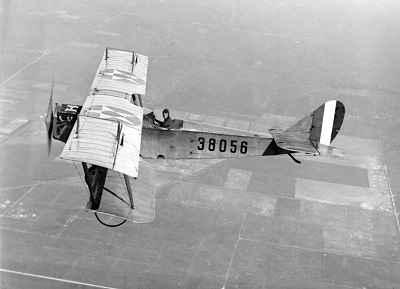Celebrating 100 Years of Ellington Field
 A lot has changed in Houston, Texas over the past 100 years.
A lot has changed in Houston, Texas over the past 100 years.
For one, the city’s population is now about seventeen times what it was in 1917. We’ve found better ways to beat the year-round heat than 300-pound blocks of ice, thankfully. And you don’t see too many horses and buggies riding down Houston’s Westheimer Road anymore.
But one institution that has stood the test of time, and is still up-and-running on its 100th anniversary this month, is Houston’s Ellington Field--and you could say its history is the story of a lifetime.
Ellington Field was built in May of 1917 – just weeks after the United States entered World War I – when the War Department purchased 1,280 acres of land south of Houston. The location was chosen for its favorable flight conditions. It would soon be the site of a first-class pilot training base to meet the rising demand for military pilots in Europe.
The 120th Aero Squadron was transferred from San Antonio’s Kelly Field to Ellington Field, and civilian pilots were brought in from across the nation to train America’s newest airmen for battle. They trained quickly and efficiently, and returned home from Europe as victors of the Great War.
The end of the war threatened the deactivation of Ellington Field, but it wasn’t long before another unit took advantage of the prime real estate. In 1923, when the War Department authorized the Texas National Guard to establish its first aviation squadrons, the 111th Observation Squadron -- tasked with mapping, photography, and reconnaissance support for the U.S. 36th Infantry Division -- found its home on the runways of Ellington Field.
When “Houston’s Own” 111th Squadron moved west to smoother runways at the newly-built Houston Municipal Airport in 1927 (known today as Houston Hobby), Ellington Field became obsolete. Prairie grass grew so tall over Ellington’s runways that the War Department resorted to leasing the land to cattle grazers for revenue.
But the rise of the Second World War created new demand for pilots, navigators, and bombardiers – and required top-notch training facilities to get them ready for battle fast. Once again Houston’s favorable flight conditions, and the desire to protect the area’s oil refineries that fueled war efforts, brought the War Department’s focus back to Ellington Field. The government still owned the abandoned base, and Houston’s rapid growth had made Ellington Field more accessible by highway and rail.
Once again, Ellington Field became a premiere flight training facility, home to the U.S. Army Air Corps’ Bombardment Academy of the Air. Its well-trained pilots again returned home victorious and were so essential to the war effort that they led the United States to establish an independent U.S. Air Force.
As a reflection of the U.S. commitment to the Air Force, Ellington Field became Ellington Air Force Base. Its buildings and runways were renovated for a fleet of larger and heavier aircraft, and it became the new home to the Civil Air Patrol, a public service unit centered on emergency service missions such as search and rescue and disaster relief.
Soon, the U.S. was ready for a new type of flight. In the early 1960s, NASA officials traveled the nation to survey locations to house their new astronaut training complex, and they came to the same conclusion the War Department did 45 years earlier: the Houston climate was perfect for flight training. That, along with Houston’s infrastructure, access to deep-water ports, and its first-class universities, led them to choose Houston as their new headquarters, and Ellington Air Force Base as their new astronaut flight training facility. It’s where Neil Armstrong trained to maneuver in low-gravity zones, withstand G-forces, and even plant an American flag before he became the first man to land on the moon in 1969. And it’s now supporting NASA’s next great mission: landing a human on Mars.
On Ellington Field’s 100th anniversary, it is one of the few World War I installations still in use. It just became one of only ten FAA licensed commercial spaceports in the United States. It accommodates NASA, supports civilian airports, and the Ellington Joint Reserve Base boasts the unique distinction of serving all five branches of the U.S. military – Air Force, Army, Navy, Marine Corps, and Coast Guard.
For a century, Ellington Field has been a second home to those leading U.S. aviation and space exploration, defending democracy across the globe, and providing hope and support to Americans after natural disasters. I am proud to commend its 100 years of meaningful service.



